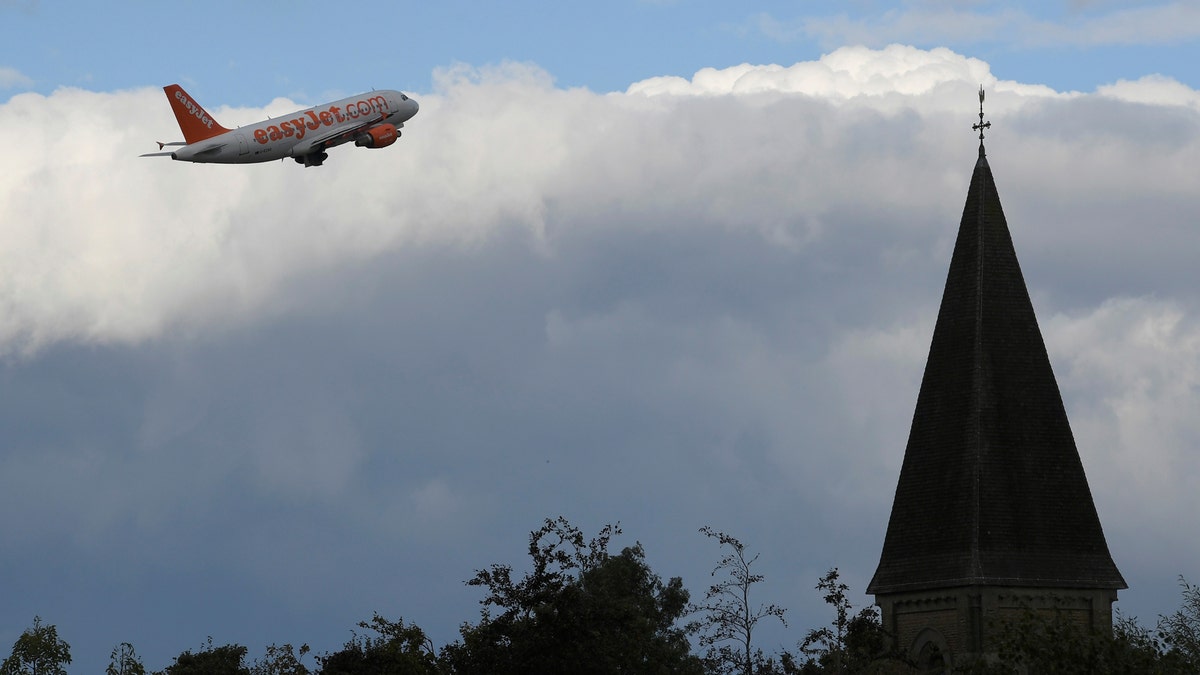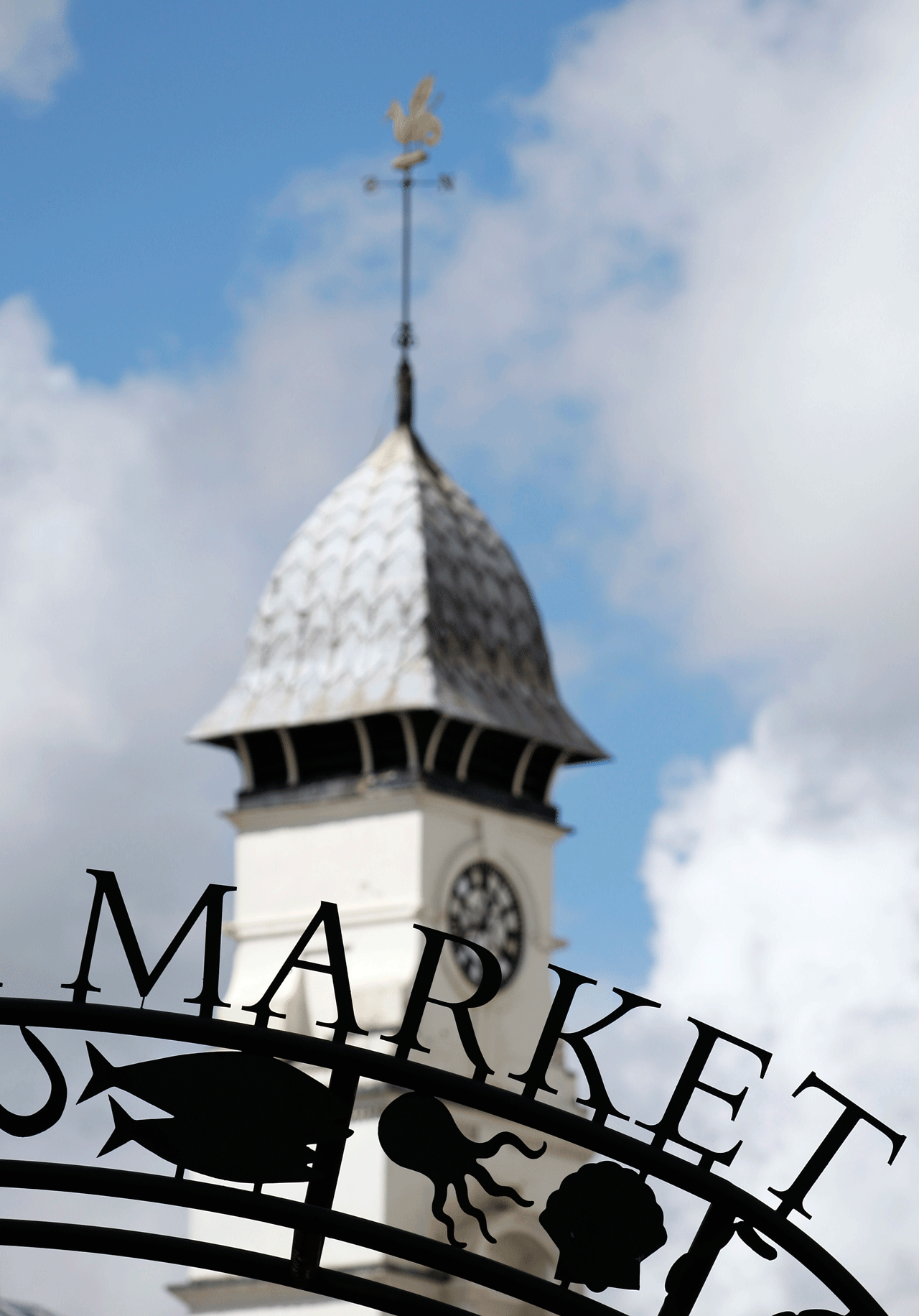
File photo - An EasyJet passenger aircraft is seen behind a church steeple as it takes off from Gatwick Airport in southern England, Britain, Oct. 9, 2016. (REUTERS/Toby Melville)
St. Giles Church in the rural Essex County looks similar to the more than 8,000 parish churches that dot the English countryside.
Towering maple and oak trees shade the medieval building and stained glass depictions of Christian saints look down on a graveyard full of mossy headstones. The square bell tower of the church, which dates back to the time of the Norman conquest of England, looms over a property that hasn’t changed much since the 12 Century.
But on closer inspection, there is something seemingly incongruent about the ancient St. Giles.
Carefully camouflaged to resemble the centuries-old stone of the church tower is a small satellite dish and similarly sized transmitters that provide a high-speed broadband internet connection to about 120 local households.
Up until about two years ago, residents of the village of Great Maplestead – like many other hamlets and rural communities in the United Kingdom – have had no or, at best, severely limited Wi-Fi coverage and turning the house of worship into a hotspot is the latest move to help residents in rural England get connected.
A recent agreement between the UK and the Church of England has paved the way for parishes to put up their own Wi-Fi transmitters by cutting out the bureaucratic red tape and streamlining the process to allow broadband operators to install their equipment.
The push to install broadband equipment on church steeples has stirred a controversy among people concerned that the satellite dishes and transmitters will ruin the historical and architectural legacy of the buildings – not to mention the religious significance of the churches themselves. But lawmakers in the UK believe doing so will both cut down on the number of communities struggling to get reliable, high speed broadband access and bring in much needed money to churches whose congregations have begun to dwindle.
“Churches are central features and valued assets for local communities up and down the country,” Matt Hancock, the secretary of state for the Department for Digital, Culture, Media and Sport, said in a press release. “This agreement with the Church of England will mean that even a 15th century building can help make Britain fit for the future improving people’s lives by boosting connectivity in some of our hardest-to-reach areas.”
Under the accord, lawmakers made clear that any Wi-Fi infrastructure will not have any impact on either the character or architectural and historical significance of the churches.
“It is vitally important people living in the countryside have the same opportunities as those in urban areas, and that means having strong mobile and broadband infrastructures in place,” Rural Affairs Minister Lord Gardiner said. “This initiative marks an important step in our continued drive to connect better our rural communities and bridge the digital divide.”

(Reuters)
While it is not government mandated, proponents of the move are pitching it as a way for Church of England parishes to make some much needed money by renting out their steeples and spires, as attendance continues to plummet. In 2016, the number of people attending Church of England services each week dropped below 1 million for the first time – accounting for less than 2 percent of the population.
“Regardless of your religious beliefs, there’s value in churches being supported and remaining open,” writer Nate Laxon wrote in Bloomberg. “They’re often the best-preserved examples of ancient architecture in towns, and stand as some of the most important and tangible pieces of our cultural heritage.”
It is unclear how many parishes and churches will install the equipment, but churches in a number of hamlets have already become Wi-Fi hotspots.
“We know that rural churches in particular have always served as a hub for their communities,” Stephen Cottrell, the Bishop of Chelmsford, said in a press release. “Encouraging churches to improve connectivity will help tackle two of the biggest issues rural areas face - isolation and sustainability.”
